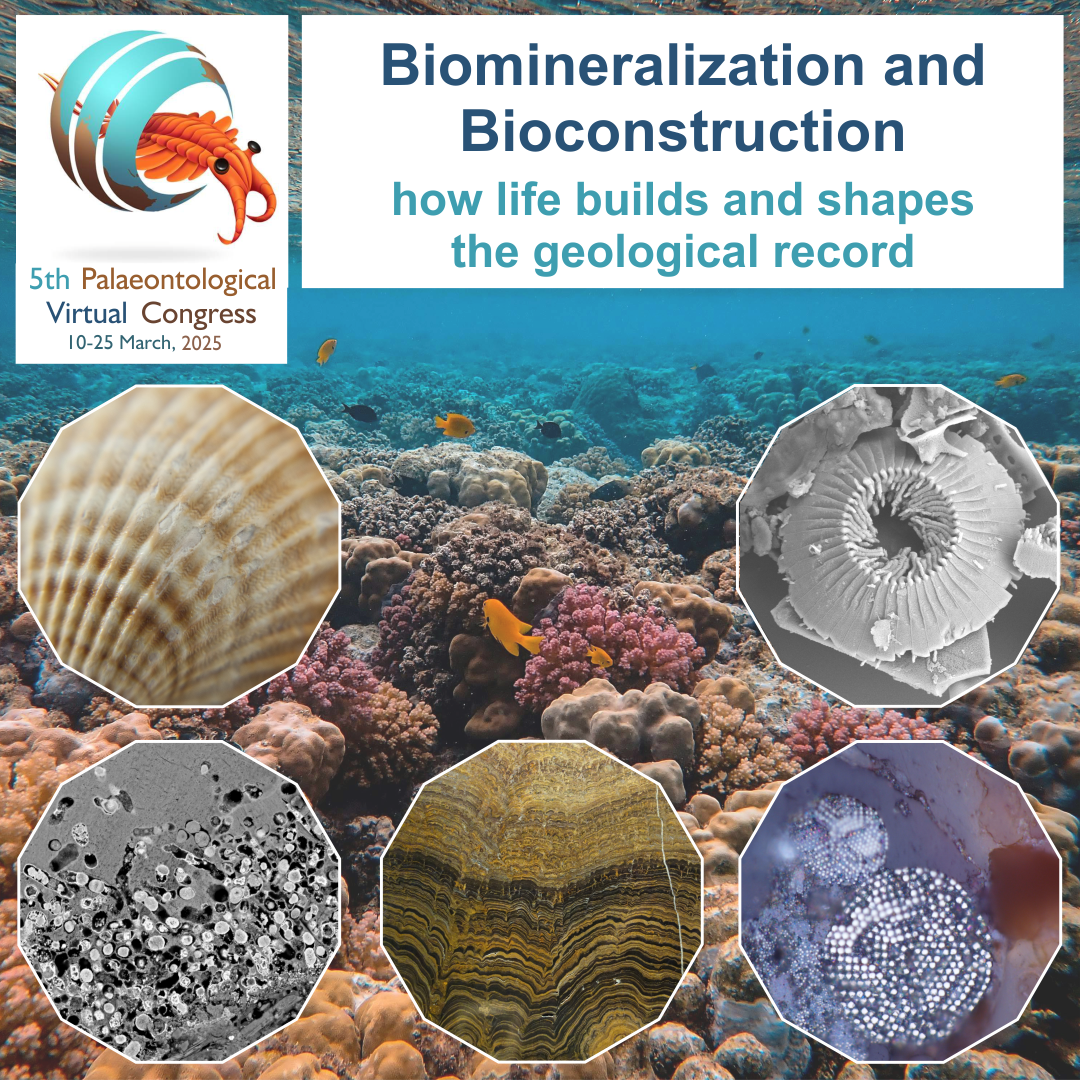Biomineralization and bioconstruction: how life builds and shapes the geological record

AUTHORS
Giulia Bosio
Dipartimento di Scienze della Terra, Università di Pisa
giulia.bosio.giulia@gmail.com
Luca Pellegrino
Dipartimento di Scienze della Terra, Università di Torino
lu.pellegrino@unito.it
Luca Mariani
Dipartimento di Scienze Chimiche e Geologiche, Università degli Studi di Modena e Reggio Emilia
l.mariani35@unimore.it
Jan Goleń
Instytut Nauk Geolgicznych Polskiej Akademii Nauk
ndgolen@cyf-kr.edu.pl
Abstract
Throughout the Earth’s history, the extinct and extant organisms have played and still play a major role in building and shaping the geological record. Both micro- and macroorganisms can drive biomineralization, i.e., the processes by which minerals are deposited in the biological matrix of living organisms, or can mediate geochemical and mineralization processes via their life activities. Mineral precipitation and dissolution can be mediated by organisms in all sorts of environments, from marine, brackish and freshwater to continental and underground settings. Moreover, through bioconstruction, microorganisms have built special microbial mounds such as stromatolites since the Archean, whereas marine benthic macroorganisms (e.g. corals, bryozoans, crinoids, algae, annelids, sponges and oysters) form the most renowned reefs in the world since the Ordovician. In addition, both micro- and macroorganisms can form entire geological units after their death, thus indirectly contributing to the formation of huge volumes of sedimentary rocks. Notably, microbial life is deeply involved in diagenesis and fossilization. This session explores the diverse and fascinating roles of life in these processes.
